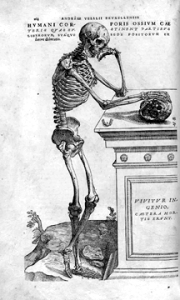Caspar Wistar M.D. is the grandson of the Caspar who built the glass business. His medical training was first rate: University of Edinburgh. The family could clearly afford the best. Following graduation, he returned to Philadelphia where, in 1789, he succeeded the esteemed Benjamin Rush as the chemistry professor at the College of Pennsylvania, known today as the University of  Pennsylvania. Caspar Wistar also taught midwifery and, most importantly, anatomy. In fact, Doctor Caspar Wistar wrote the seminal American anatomical textbook, the two-volume A System of Anatomy, published in 1811 and 1814.
Pennsylvania. Caspar Wistar also taught midwifery and, most importantly, anatomy. In fact, Doctor Caspar Wistar wrote the seminal American anatomical textbook, the two-volume A System of Anatomy, published in 1811 and 1814.
Caspar the M.D. was a highly respected member of numerous of the most learned societies in the humanities and sciences, and sat on the boards of numerous schools and hospitals. His expertise earned him worldwide renown, which helped him to recruit medical students from Europe to study in Pennsylvania. Doctor Wistar was among the earliest advocates of the benefits of vaccination against disease.
Thomas Nutall, the botanist, named the familiar vine Wistaria for Caspar. Watchful eyes studying the Lewis and Clark Expedition may recall the name Wistar, too. As Stephen Ambrose reminds us, “Dr. Caspar Wistar was the last of the Philadelphia savants” Meriwether Lewis consulted while preparing for his journey through the Louisiana Purchase territory. Thomas Jefferson, Doctor Wistar’s close friend, as revealed through Jefferson’s correspondence, recommended the doctor to Lewis. Ambrose cites Wistar as the “foremost authority on fossils in America.” Wistar and Meriwether  Lewis discussed Megalonyx and the mastodons Jefferson and Lewis thought might still be stomping Midwestern prairie. Lewis sent Wistar specimens for identification.
Lewis discussed Megalonyx and the mastodons Jefferson and Lewis thought might still be stomping Midwestern prairie. Lewis sent Wistar specimens for identification.
Bill Bryson unearths a chance for Doctor Caspar to have had another claim to fame, however. In A Short History of Nearly Everything, Bryson relates the 1787 disinterment of a huge leg bone, likely a femur, from the banks of Woodbury Creek, in Gloucester County, New Jersey. American Scientist points out that the “distinguished physician and anatomist Caspar Wistar” presented a paper to the American Philosophical Society in which he described a very large thighbone, too large to belong to any of the animals indigenous to the region at that time. American Scientist further notes that Woodbury Creek is quite close to the marl pits at Haddonfield, New Jersey, where, “70 years later, the first associated remains of any dinosaur were excavated and described by Joseph Leidy as Hadrosaurus…we can be reasonably sure that the femur [described by Wistar] was the first discovery of an American dinosaur.”










